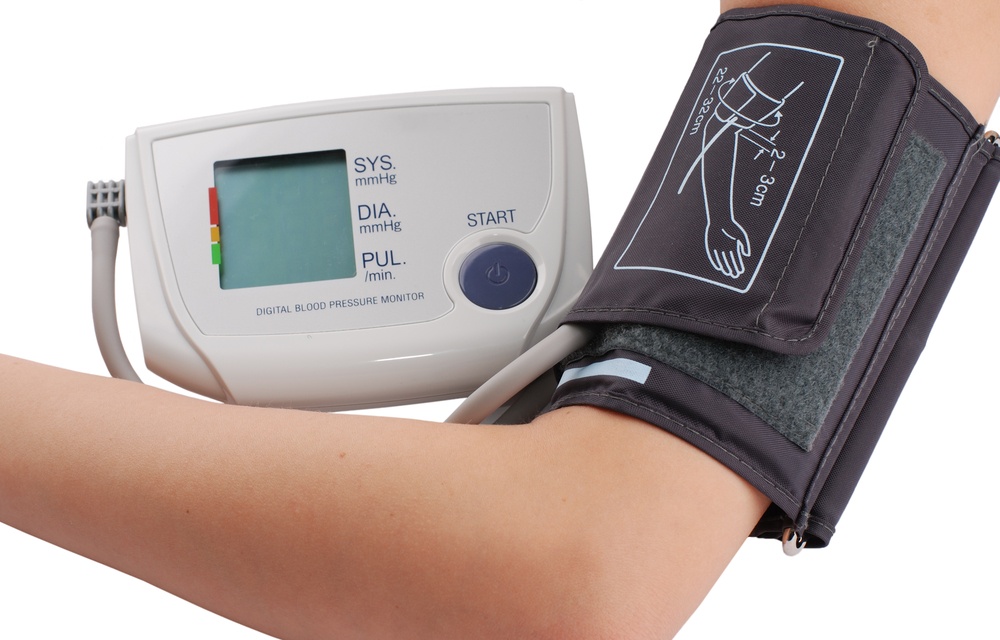 There is one thing that is included in almost every institution’s advice with regards to managing your high blood pressure.
There is one thing that is included in almost every institution’s advice with regards to managing your high blood pressure.
However, a recent study has demonstrated that many people do this incorrectly, causing devastating effects.
Most physicians and health institutions recommend that you buy a blood pressure monitor to keep at home for measuring your blood pressure, especially if it tends to be on the high side.
After all, if you know when your blood pressure tends to increase, and you understand the activities that raise it, you are in a better position to manage it properly.
In addition, the doctor’s office reading does not always reflect your true blood pressure, as most people tend to be more anxious or more relaxed in the doctor’s office than during the rest of the day.
At the American Society for Nephrology’s annual meeting in Philadelphia that took place in November, academics presented some interesting research on home blood pressure monitors.
They recruited 210 volunteers and compared the results from their home monitors with those of a mercury sphygmomanometer in a doctor’s office taken within a few minutes.
The results?
Of the 210 systolic readings, 63 were more than five mm/Hg different, and 16 were more than 10 mm/Hg different. That is to say, 30% of the readings were more than five points wrong, and 8% were more than 10 points wrong.
Diastolic discrepancies were worse: 32% of diastolic readings were more than five points wrong, and 9% were more than 10 points wrong.
Getting the measure wrong by five points may not be a big problem, but a difference greater than 10-points is.
For example, while 125 systolic reading is on the high side of normal, a 140 reading indicates a problem that must immediately be treated.
So, what should you do to get an accurate reading at home?
If you have not bought a monitor yet, you can ask your doctor whether there are any that he or she recommends.
If you have already bought one, take it to your GP’s office the next time you visit to have your blood pressure measured. If it gives the same result as the doctor’s reading, you should continue using it. Compare it with the GP’s device at least once annually to ensure that it remains calibrated.
If it gives a different result compared to your doctor’s device, take it along again next time to check whether it is at least consistent. These devices are like scales. If it consistently measures five points too high or too low, just subtract or add those five points to make sense of the reading.
If it measures inconsistently, you can send it back to the manufacturer to be recalibrated.
The American Heart Association and Blood Pressure UK both recommend automatic/digital over manual devices, which most home users will appreciate.
They also both recommend that you use devices that fit around your upper arm, as those tend to give more accurate readings than those that read from your wrist or finger. Just make sure that the cuff size is appropriate for the size of your arm before you buy it. Kids and weightlifters may need special cuffs.
That being said, measuring your blood pressure right does you no good unless you also lower it naturally.

 Overcoming IBD
Overcoming IBD Multiple Sclerosis
Multiple Sclerosis Banishing Bronchitis
Banishing Bronchitis Gum Disease Gone
Gum Disease Gone Overcoming Onychomycosis
Overcoming Onychomycosis Neuropathy No More
Neuropathy No More The Prostate Protocol
The Prostate Protocol Brain Booster
Brain Booster
 Ironbound
Ironbound
 Solution for Shingles
Solution for Shingles
 The Bone Density Solution
The Bone Density Solution
 The Ultimate Healing Protocol
The Ultimate Healing Protocol
 The Parkinson's Protocol
The Parkinson's Protocol
 The Chronic Kidney Disease Solution
The Chronic Kidney Disease Solution
 Overthrowing Anxiety
Overthrowing Anxiety The Fatty Liver Solution
The Fatty Liver Solution The Hypothyroidism Solution
The Hypothyroidism Solution
 The End of Gout
The End of Gout The Blood Pressure Program
The Blood Pressure Program
 The Oxigized Cholesterol Strategy
The Oxigized Cholesterol Strategy
 Stop Snoring And Sleep Apnea Program
Stop Snoring And Sleep Apnea Program
 The Arthritis Strategy
The Arthritis Strategy The Vertigo & Dizziness Program
The Vertigo & Dizziness Program The 3-Step Diabetes Strategy
The 3-Step Diabetes Strategy Hemorrhoids Healing Protocol
Hemorrhoids Healing Protocol The Erectile Dysfunction Master
The Erectile Dysfunction Master Weight Loss Breeze
Weight Loss Breeze The IBS Program
The IBS Program The Insomnia Program
The Insomnia Program The Migraine and Headache Program
The Migraine and Headache Program The Neck Pain Solution
The Neck Pain Solution The Menopause Solution
The Menopause Solution The Ejaculation Master
The Ejaculation Master The TMJ Solution
The TMJ Solution The Acid Reflux Solution
The Acid Reflux Solution The Fibromyalgia Solution
The Fibromyalgia Solution The Psoriasis Strategy
The Psoriasis Strategy